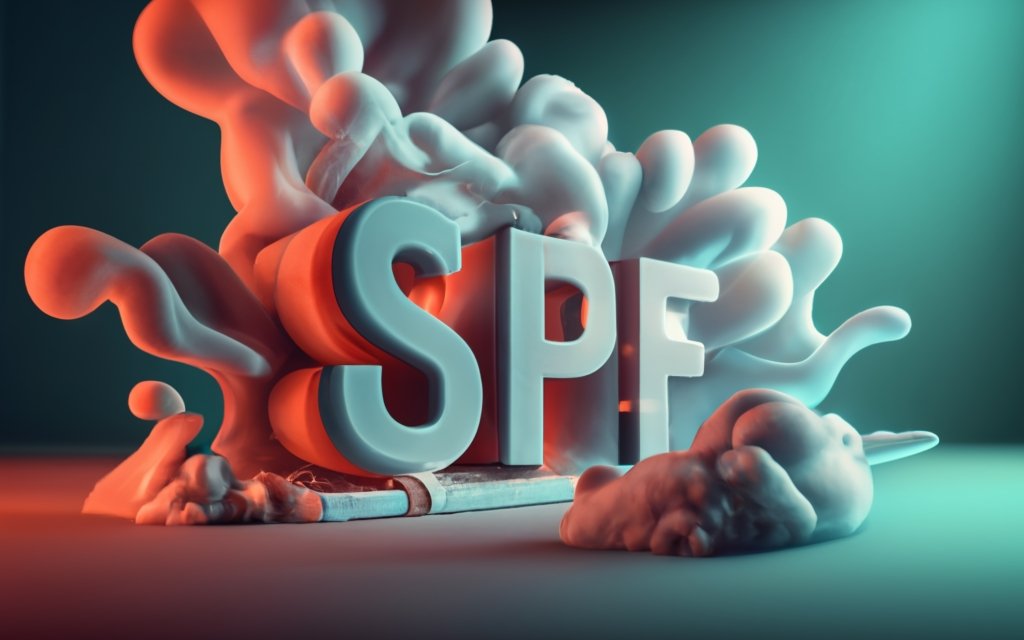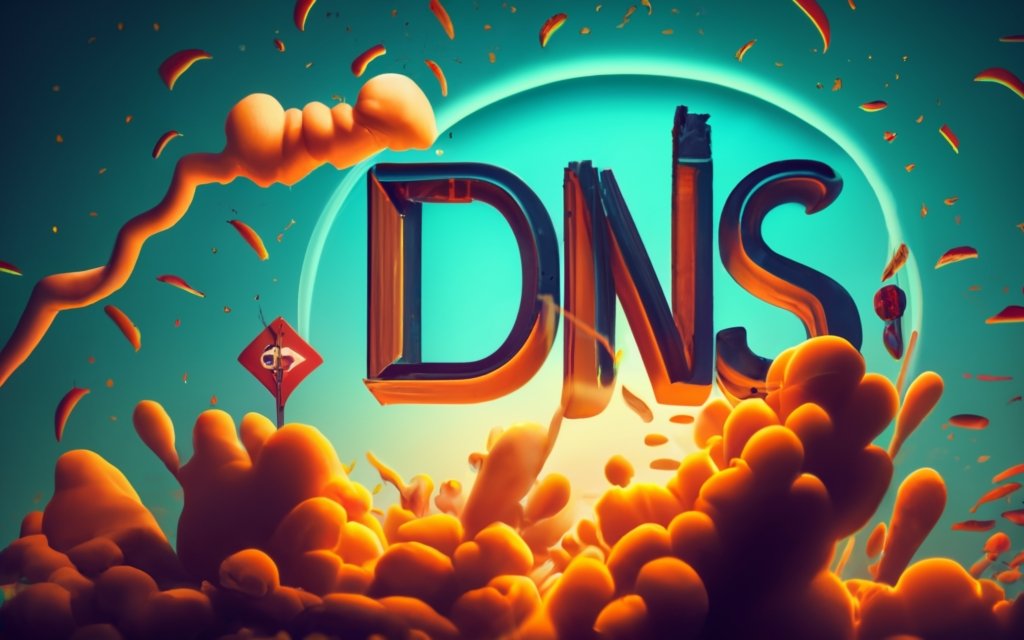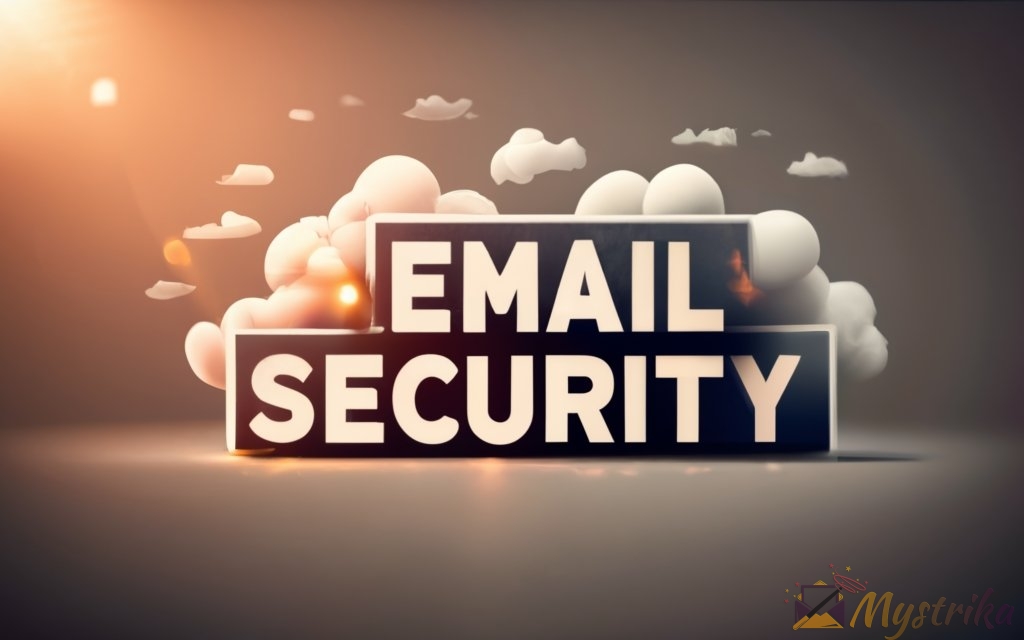Email is a gateway for cyberattacks. But attaching DKIM, DMARC, and SPF guards to your domain locks out spoofing, phishing, and scams. This guide arms security teams to implement layered authentication that keeps inboxes — and brands — protected.
Email is one of the most widely used forms of communication, both for business and personal use. But for all its convenience, email still poses significant security risks like phishing attacks and business email compromise scams. Thankfully, email authentication protocols like DKIM, DMARC, and SPF help address these risks by validating the origin of email and preventing spoofing. In this introduction, we’ll provide an overview of these key protocols and discuss why proper configuration is so important for security and deliverability.
What are DKIM, DMARC, and SPF and Why Do They Matter?
DKIM, DMARC, and SPF work in different ways to authenticate email and confirm the mail is truly coming from the domain it claims to originate from.
DKIM (DomainKeys Identified Mail) validates the source of an email by verifying a cryptographic signature added to the message headers and body. This signature is created using a private key only known to the sending domain. The corresponding public key is published in the domain’s DNS records so recipients can verify the signature. If the signature doesn’t match, the email has likely been spoofed.
DMARC (Domain-based Message Authentication, Reporting and Conformance) builds on SPF and DKIM by setting a policy for handling unauthorized email claiming to come from your domain. For example, a DMARC policy might instruct receivers to reject or quarantine emails that fail SPF or DKIM checks. DMARC also provides visibility through aggregate and forensic reports on email compliance.
SPF (Sender Policy Framework) works by checking that incoming mail originates from a server authorized by the domain’s DNS records. The receiving mail server will check the connecting IP address against the SPF record and allow or block the message. This makes it harder for spammers to spoof the sender address.
With these protocols in place, attackers have a much harder time impersonating and phishing recipients using your domain. Spoofed emails claiming to come from your domain will fail the authentication checks and get blocked or filtered out. This prevents your brand reputation being hurt by spoofing and builds trust with partners.

The Importance of Properly Configured Authentication Protocols
To realize these security and anti-phishing benefits, organizations must take the time to properly configure DKIM, DMARC, and SPF. The protocols are only effective when set up completely and according to best practices.
A key benefit of proper configuration is improved email deliverability and inbox placement rates. Email providers like Gmail use authentication mechanisms to help filter out potential spam and phishing attacks. Messages that fail DMARC or SPF checks may be treated as suspicious by receivers and routed to the spam folder or rejected entirely.
Strong authentication also builds your domain’s reputation and ensures receiving email servers recognize you as a trusted sender. With so much bogus email in circulation, receivers maintain constant oversight of sender reputation to limit spam. Passing DKIM and SPF validation consistently over time improves your standing and email acceptance.
In addition, correct implementation provides visibility into your outbound email traffic and security events. For example, DMARC aggregate reports give high-level data on the volume of emails passing and failing alignment checks. Forensic reports provide message details like headers and content for further analysis. This reporting allows you to monitor email flows and uncover potential compromises.
Now that we’ve covered the basics of why email authentication matters, let’s explore each protocol and implementation steps in more detail. Proper configuration requires understanding how each mechanism works and coordinating records across domains. We’ll also discuss deployment best practices to avoid common pitfalls when enforcing policies.
With a layered email authentication approach using DKIM, DMARC, and SPF, organizations can significantly reduce spoofing risks and ensure wanted mail reaches the inbox. But the devil is in the details – minor oversights can limit the effectiveness and even cause legitimate email to be blocked unintentionally. By reading this complete guide, you’ll gain the knowledge needed to implement these solutions successfully.
DKIM (DomainKeys Identified Mail) provides email authentication at the mail server level by verifying cryptographic signatures included with messages. Proper DKIM configuration and key management are essential to gain the anti-spoofing benefits. In this section, we’ll cover how DKIM signing and validation occurs and key best practices.
The Purpose and Function of DKIM
DKIM’s core purpose is to validate the true source of an email by verifying a digital signature added by the sending mail server. This prevents malicious actors from spoofing email headers to impersonate another domain.
The DKIM process works as follows:
- The sending mail server signs email headers and body content using a private key unique to that server. This creates a hashed signature value that is added to the message’s headers.
- The receiving mail server extracts the signature and validates it using the sender’s published public key.
- If the signature is verified, the email passed the DKIM check and can be trusted as originating from that domain. Failed validation indicates potential spoofing.
By cryptographically signing outbound email, DKIM prevents tampering with key details like the sender address. The validated domain can only be impersonated by gaining access to the private signing key. This mechanism blocks many phishing and business email compromise attacks.

How DKIM Signing and Validation Occurs
Let’s look at the step-by-step process of how DKIM signing and verification takes place:
DKIM Signing by Sending Server
- The email content is hashed to produce a unique fingerprint of the message body and headers.
- This hash is encrypted with the server’s private key to generate the DKIM signature.
- The signature is inserted into the email header as a DKIM-Signature field.
- The email is sent to the receiving domain’s mail server.
DKIM Validation by Receiving Server
- The receiving server extracts the DKIM-Signature value from the email headers.
- The public key for the signing domain is retrieved from published DNS records.
- The public key is used to decrypt the signature attached to the email.
- The decrypted hash is compared to a newly calculated hash of the email body and headers.
- If the hashes match, the signature is valid and the email passes DKIM authentication.
- The validated result can be used to determine delivery or filtering actions per DMARC policies.
This automated process allows receiving servers to establish proof of the email’s origin in seconds using asymmetric cryptography. Billions of DKIM validations take place globally each day to protect inboxes.
DKIM Key Considerations
To implement DKIM effectively, keep these key considerations in mind:
- Use at least 2048-bit RSA keys for signing to ensure strong security that can’t easily be cracked. Regularly rotate keys to limit impact if a compromise does occur.
- Publish public keys in the domain’s DNS text record for public lookup and validation. Add service records specifying the signing domains.
- Utilize DKIM for all outbound mail by configuring mail server software like Postfix or Exchange. Signatures should apply to both internal and external email.
- Rotate keys periodically to limit damage if a key is compromised. Old public keys should remain published in DNS during the transition to ensure validation continuity.
- Use dedicated signing keys per server and domain for targeted management. Shared keys over multiple domains create excess risk.
With a well-planned DKIM implementation, organizations can achieve strong domain-level email authentication. Signature validation gives receivers proven assurance the mail originated from your systems. But DKIM is only one piece of the anti-spoofing puzzle. Let’s look next at how DMARC builds on DKIM and SPF…
SPF (Sender Policy Framework) offers a straightforward way to block spoofed emails claiming to originate from your domain. By publishing authorized servers in DNS, receivers can verify the originating IP matches your policy. Let’s explore how SPF records work, the protection benefits, and best practices for publishing SPF.
Understanding SPF Records and Checks
An SPF record lists IP addresses and hostnames of servers permitted to send email from your domain. Here’s how SPF validation happens when mail is received:
- The receiving mail server checks for an SPF record in the sender’s DNS entries.
- The record specifies IP addresses and hostnames authorized to send mail for that domain.
- The receiver compares the connecting IP to the SPF allow list.
- If the IP matches, the mail passes the SPF check. If not, the mail fails.
- Failed mail can be rejected, marked as spam, or filtered based on the receiving domain’s policies.
For example, an SPF record may list ip4:192.168.1.1 and ip4:192.168.1.2 as authorized outbound email servers. Mail arriving from those IPs will pass, while mail from other addresses will fail the SPF check.
This makes it much harder for external parties to spoof email claiming to come from your domain. The sender address can be forged, but not the originating IP.
The Benefits of Implementing SPF
Enabling SPF provides two key protections:
- It blocks spoofed emails with forged sender addresses in your domain. Phishing scams impersonating your company will fail SPF and get filtered out or rejected.
- SPF reduces spam overall by making it harder for bad actors to impersonate legitimate domains. Major email providers leverage SPF to identify and block suspicious mail.
SPF is a quick win for higher email security. Once an SPF record is published, sending servers can instantly start referencing it for validation checks.
For optimal protection, SPF should be used to complement DMARC and DKIM. Combining these layers makes successful spoofing extremely unlikely.

Considerations for Publishing an SPF Record
Follow these tips when crafting and publishing an SPF record:
- List all your organization’s authorized outbound mail servers in the record. It’s okay to list both IPs and hostnames.
- Start with SPF alignment of “soft fail” during testing. This identifies issues without blocking wanted mail.
- Enforce “-all” at the end to fail mail from any unlisted servers. This maximizes protection.
- Consider using “include” mechanisms to reference other domains’ SPF records.
- Update your SPF record immediately if servers are added, removed, or changed. Outages can result otherwise.
- Use SPF checking tools to validate your published record and spot errors.
- Monitor your domain’s DMARC aggregate reports for SPF alignment issues.
With a complete SPF record and “-all” fail policy, you can stop phishing attacks abusing your brand. Combine with DKIM signatures and DMARC reporting for layered security.
Now that we’ve covered SPF, let’s look at how DMARC builds upon SPF and DKIM to set domain-level email authentication policies.
With fundamentals of DKIM, DMARC, and SPF covered, let’s discuss deployment strategies and ongoing management for an optimized authentication framework. A layered, incremental approach is recommended when rolling out these technologies to maximize security without disrupting email flows.
Use a Layered Approach with DKIM, DMARC, and SPF
Implementing just one email authentication protocol provides partial protection. But combining DKIM, DMARC, and SPF offers synergistic security:
- DKIM validates outbound mail at the server level through cryptographic signing. This confirms the originating server but doesn’t set policies.
- SPF checks that incoming mail comes from authorized servers in DNS. However, internal mail may bypass SPF checks.
- DMARC builds on DKIM and SPF by defining domain-level policies on failed mail. It also provides visibility through reporting.
Together, these technologies make spoofing virtually impossible for external parties:
- DKIM ensures outbound mail is signed at the source.
- SPF blocks untrusted servers from connecting inbound.
- DMARC aligns authentication results and sets rejection policies.
Think of it as layered security – each mechanism compounds the protections of the others. For example, if an attacker managed to bypass SPF, DKIM and DMARC would still catch the spoofing.
Aim to deploy all three protocols fully before enforcing strict policies. This allows monitoring and troubleshooting while mail flow remains unaffected.
Start with a Relaxed Policy and Work Up to Strict
An incremental approach is recommended when activating enforcement policies:
- Deploy DKIM and SPF with initial validations but without actions on failures.
- Add a DMARC record specifying the “none” policy and activate reporting. This provides visibility without blocking.
- Tune authentication based on reporting feedback to improve alignment and prepare for enforcement.
- Update the DMARC policy to “quarantine” to send failed mail to the spam folder. Monitor for any issues.
- Graduate to “reject” for the strictest policy that rejects all failed email. This maximizes protection.
Starting lenient allows tracking authentication results without the risk of mailbox disruptions. Work up towards “reject” as you gain experience and confidence in the configurations.
Periodically review reports for new gaps or changes needed in your DKIM and SPF setup. For example, adding a new sending server would require updates to publish keys and authorize the IP.
Act on Feedback Reports to Identify Issues
Analyzing your DMARC aggregate and forensic reports provides valuable insights:
- Aggregate reports give high-level metrics like authentication pass/fail ratios and email volumes. Watch for low DKIM and SPF alignment rates.
- Forensic reports include message details like headers and content for deeper investigation. Review examples of failed mail to understand why.
- Third-party reporting tools can help digest reports and highlight what needs attention.
- Tuning your authentication publishing can improve alignment rates measured in reports.
- Reports may reveal hijacked infrastructure sending rogue email that needs addressing.
- Reports confirm protection by showing rejected malicious mail attempting to spoof your domain.
By acting on report findings, you can continually refine your setup and respond to emerging threats detected. Think of reports as active feedback to maximize your program.
Automate and Monitor Your Configuration
Managing email authentication programs involves continuously:
- Adding and updating DNS records as servers and policies change.
- Generating and rotating DKIM keys to ensure signing continuity.
- Monitoring reports for new issues detected.
Automation and centralized tools are recommended to maintain consistent configurations and avoid lapses in protection from manual errors:
- Use DNS management tools that auto-generate and publish your DKIM and DMARC records.
- Employ monitoring to check that records remain valid in DNS and alert on problems.
- Rotate DKIM keys programmatically rather than relying on manual workflows.
- Build reporting dashboards that pull in aggregate and forensic data and highlight what needs attention.
Plan the operational processes to maintain your authentication framework before enforcement to ensure protection remains consistent over the long-term. Prioritize automation for efficient scalability.
With a layered authentication approach, thoughtful deployment, and ongoing tuning based on reporting, you can achieve strong email security and prevent brand abuse through spoofing. But even with the best technology, you can’t eliminate human errors and oversights. That’s why monitoring and automation are key — they provide oversight and reaction where human attention may lapse.
Conclusion
That concludes our guide on leveraging DKIM, DMARC, and SPF to lock down your domain against email threats. With the right expertise and persistence, determined attackers may still attempt to circumvent protections, but these protocols force them to constantly change tactics and work harder. By implementing domain-based authentication and setting enforcement policies, you can drastically reduce spoofing, phishing, spam, and other malicious emails abusing your brand.
Email authentication can seem complex at first, with overlapping capabilities between DKIM, DMARC, and SPF. Here are answers to frequently asked questions to clarify how these technologies work together to secure domains against spoofing, phishing, and spam.
Do I need to deploy DKIM, DMARC, and SPF?
The short answer is yes – for comprehensive email protection you need to utilize DKIM, DMARC, and SPF in tandem. Here’s a quick rundown of the role each plays:
- DKIM provides mail server level authentication. Messages are cryptographically signed to prove they originated from your servers.
- SPF blocks spoofed mail by checking sender IP addresses against authorized servers listed in DNS.
- DMARC builds on DKIM and SPF by defining domain policies and reporting to monitor compliance.
Using just one or two of these mechanisms leaves gaps that sophisticated attackers can exploit. For example, DKIM alone can’t stop an unauthorized server from sending spoofed mail. That’s where SPF comes in.
Similarly, SPF blocks untrusted IPs but can’t verify authorized servers like DKIM. DMARC fills this capability gap.
Only by layering DKIM, SPF, and DMARC can you achieve comprehensive protection and visibility. Enable all three across your domains for defense-in-depth.
What’s the difference between DKIM and DMARC?
DKIM and DMARC serve different purposes at different levels:
- DKIM authenticates at the mail server level by signing outbound messages with public key cryptography. This confirms the mail originated from your infrastructure.
- DMARC sets domain-level policies for handling failed messages at receiving servers. It builds on DKIM (and SPF) by adding enforcement directives.
For example, DKIM ensures your mail server signs outgoing mail so receivers can validate source authenticity. DMARC then instructs receivers to quarantine or reject messages that fail DKIM or SPF checks, providing domain-level control.
DKIM protects outbound mail creation. DMARC protects inbound consumption. They work hand in hand to secure both sides of email communication.
How can I check my email authentication setup?
Several free online tools can analyze and validate your email authentication records and configurations:
- MXToolbox (https://mxtoolbox.com/SuperTool.aspx) – Checks DNS records for DKIM, SPF, and DMARC across multiple domains and mail servers.
- Mail-Tester (https://www.mail-tester.com/) – Simulates sending test emails to analyze authentication results and configurations.
- Dmarcian (https://dmarcian.com/dmarc-inspector/) – Parses published DNS records and highlights issues to address.
- Port25 (https://www.port25.com/support/authentication-center/) – Validates SPF and DKIM publishing for domains.
These tools simulate authentication checks and confirm that your DNS records are properly structured and accessible for receivers to utilize. They provide alerts on misconfigurations to investigate and fix.
It’s recommended to run checks monthly and whenever you update records to catch issues early. Test authentication from the receiver’s perspective.
How long does it take for DNS records to propagate?
Due to the distributed nature of DNS, record changes can take time to propagate fully across all caching nameservers globally. Propagation usually occurs within these timeframes:
- Most DNS servers refresh within 24 hours on average, so new records are visible to the majority of recipients after a day.
- But DNS allows up to 48 hours caching, so full propagation can take up to 48 hours for 100% worldwide visibility.
- Immediate propagation is possible by lowering DNS TTLs, but this has trade-offs in higher traffic load.
So when you update SPF, DKIM or DMARC records, allow up to two days before relying on those new settings being in effect everywhere.
Use online propagation checking tools to verify that records have been picked up by major DNS resolvers. This ensures protection isn’t limited during the transition.

What do I do if DMARC reports show failed checks?
If your DMARC aggregate or forensic reports show high failure rates, start investigating the underlying causes:
- Audit your DKIM keys and SPF records – are valid publishes in place according to best practices?
- Check alignment failures – do they indicate gaps in authentication coverage?
- Review forensic report details – what servers, domains, and headers are involved with failures?
- Monitor failures over time – are they intermittent or recurring issues?
- Check configurations of mailing list servers, marketing systems, etc that may be bypassing authentication.
- Consider using DKIM and SPF testing tools to confirm issuing servers are properly configured.
- Assess any recent infrastructure changes that may have disrupted publishing.
Address any gaps found in your publishing, signing configurations, or enforcement policies. Work to reduce failures to maximize protection.
What is an example of a strict DMARC policy?
A strict DMARC policy that maximizes anti-spoofing protection would be:
v=DMARC1;
p=reject;
pct=100;
rua=mailto:[email protected]Breaking this example down:
- v=DMARC1 – Specifies DMARC protocol version 1.
- p=reject – Reject policy tells receivers to block all failed mail claiming to use your domain.
- pct=100 – Percentage of mail to apply policy to. 100% means all mail must pass DMARC checks.
- rua=mailto: – Report recipient address to collect aggregate and forensic reporting.
This reject policy requires all mail to pass both DKIM and SPF checks or else be blocked at intake. This provides the strongest protection but could disrupt mail flow if authentication records aren’t properly aligned.
Conclusion
I hope these examples provide clarity on how the different mechanisms complement each other to deliver layered security. The optimal configuration is publishing SPF, DKIM, and DMARC records according to best practices – then fine-tuning based on reports.
By leveraging these protocols, you can effectively eliminate phishing and brand impersonation through email spoofing. Your domain reputation will benefit as receivers observe consistent standards of email authentication and compliance.
Key Takeaways on Email Authentication Protocols
Implementing email authentication provides tremendous protection against spoofing, phishing, spam, and other attacks leveraging forged identities. Here are the key lessons:
- Use a layered approach with DKIM, SPF, and DMARC for defense-in-depth against spoofing.
- DKIM validates outbound mail through cryptographic signing at the mail server level.
- SPF blocks untrusted servers from sending spoofed mail by checking sender IPs.
- DMARC aligns DKIM and SPF to set domain-level policies on failed mail.
- Start with relaxed policies and work upwards to stringent enforcement to avoid disruptions.
- Act on DMARC aggregate and forensic reports to tune configurations and fix gaps.
- Automate record publishing and rotation to ensure consistent protections over time.
- Ongoing maintenance and monitoring is essential as servers and infrastructure change.
- Email authentication takes time and expertise to implement correctly – but pays dividends in enhanced security.
Prioritizing these best practices for DKIM, SPF and DMARC removes technical vulnerabilities that hackers exploit for social engineering. Your domain reputation also benefits from meeting industry standards for email security.
With rigorous authentication in place, you can trust that mail claiming to originate from your domain is legitimate. Spoofing and phishing become extremely difficult. This protects customers, employees and partners from compromises stemming from identity deception.
Frequently Asked Questions
What is the difference between SPF, DKIM, and DMARC?
- SPF verifies sending email servers by IP address
- DKIM verifies individual messages via cryptographic signatures
- DMARC aligns SPF and DKIM to set authentication policies
Do I need to use all three protocols?
Yes, SPF, DKIM, and DMARC provide layered security when used together. Each covers gaps the others have individually.
How do I check my authentication setup?
Use tools like Port25, MXToolbox, or Mail-Tester to validate your DNS records and test authentication.
What are DMARC aggregate and forensic reports?
- Aggregate reports provide stats on email volumes and failures
- Forensic reports include message details for investigating failures
How long does DNS record propagation take?
Up to 48 hours for global DNS propagation. Changes may not be immediate.
What should I do if DMARC reports show failures?
Analyze reports to identify and fix gaps in your DKIM, SPF, or DMARC configuration.
What is the recommended initial DMARC policy?
Start with “p=none” to monitor without blocking mail, then increase to “p=quarantine” or “p=reject”.
How often should DKIM keys be rotated?
DKIM keys should be rotated approximately every 12 months for security best practices.
Can DKIM be used to sign internal email?
Yes, DKIM signing should be applied to both inbound and outbound, internal and external email.
Does DMARC replace DKIM and SPF?
No, DMARC complements DKIM and SPF by adding policy alignment and reporting on top.
What happens if my DKIM or SPF records are misconfigured?
Mail may be treated as spam or suspicious, hurting deliverability until fixed.
Where do I publish public keys for DKIM and DMARC?
Public keys are published in DNS TXT records for your domain for receivers to lookup.
Can I use the same DKIM key for multiple domains?
No, best practice is to use unique DKIM keys for each sending domain and server.
How do I generate and manage DKIM keys?
Many email servers and DNS management tools will auto-generate keys. You can also generate your own.
What is a DMARC aggregate report?
An aggregate report provides summarized data on email volumes and overall authentication failures/success.
What is a DMARC forensic report?
A forensic report includes detailed sample message headers and content for investigating specific authentication failures.

